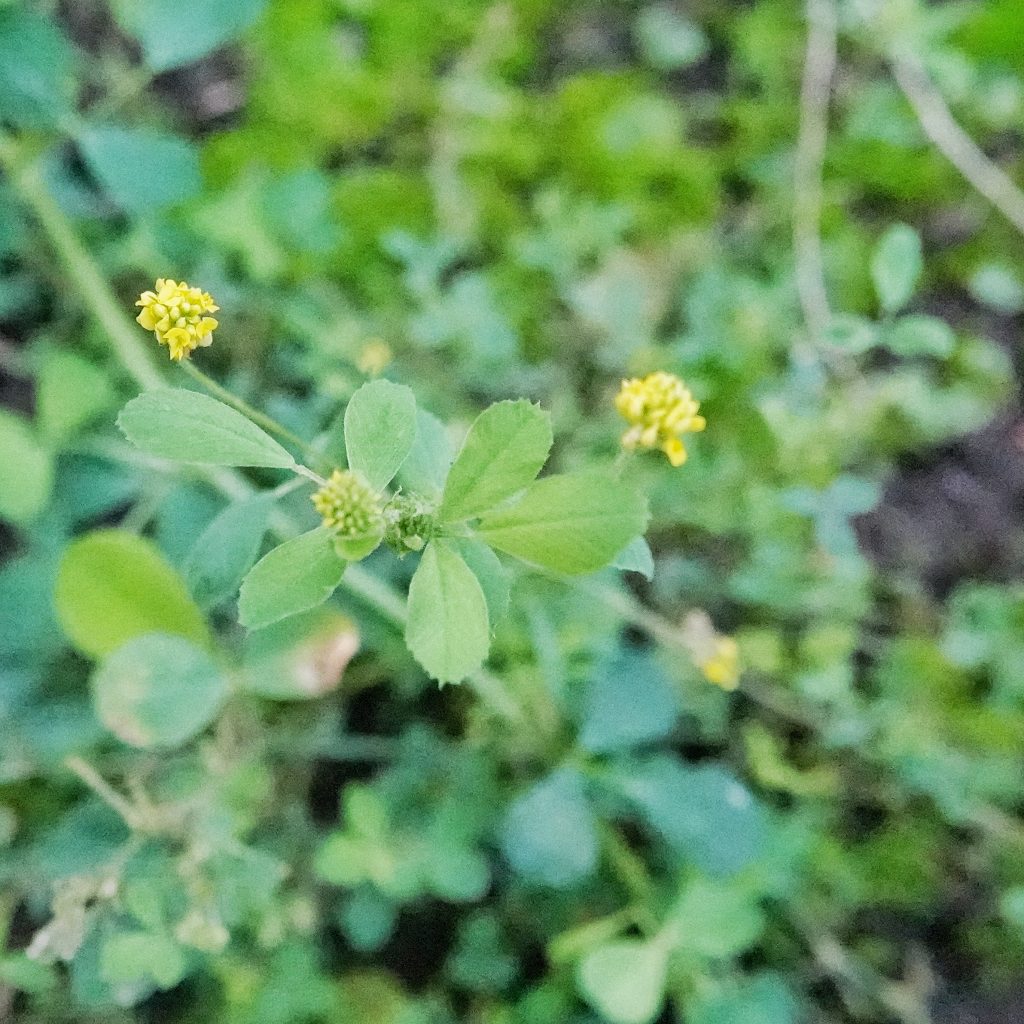
Medicago lupulina is yet another example of a plant that I thought was too similar to other plants to be identified, but when I was sitting there with “Flora of the Pacific Northwest” still open on my lap after reaching a conclusion about Amaranthus powellii, and realized there was a large patch nearby that might or might not be black medic (which is its most common common name, but since it is now has a worldwide distribution and everybody seems to have their own name for it, also apparently goes by the names yellow trefoil, hop clover, black clover, Japanese clover, nonesuch, hop medic, black hay, blackweed, and English trefoil, as well as a ton of other regional names), I decided to give it a go. For awhile it thought it would turn out to be yet another plant that was actually very simple to differentiate, because Medicago lupulina is the only yellow flowered Medicago that has more than 6 flowers per inflorescence (it has 10-20).
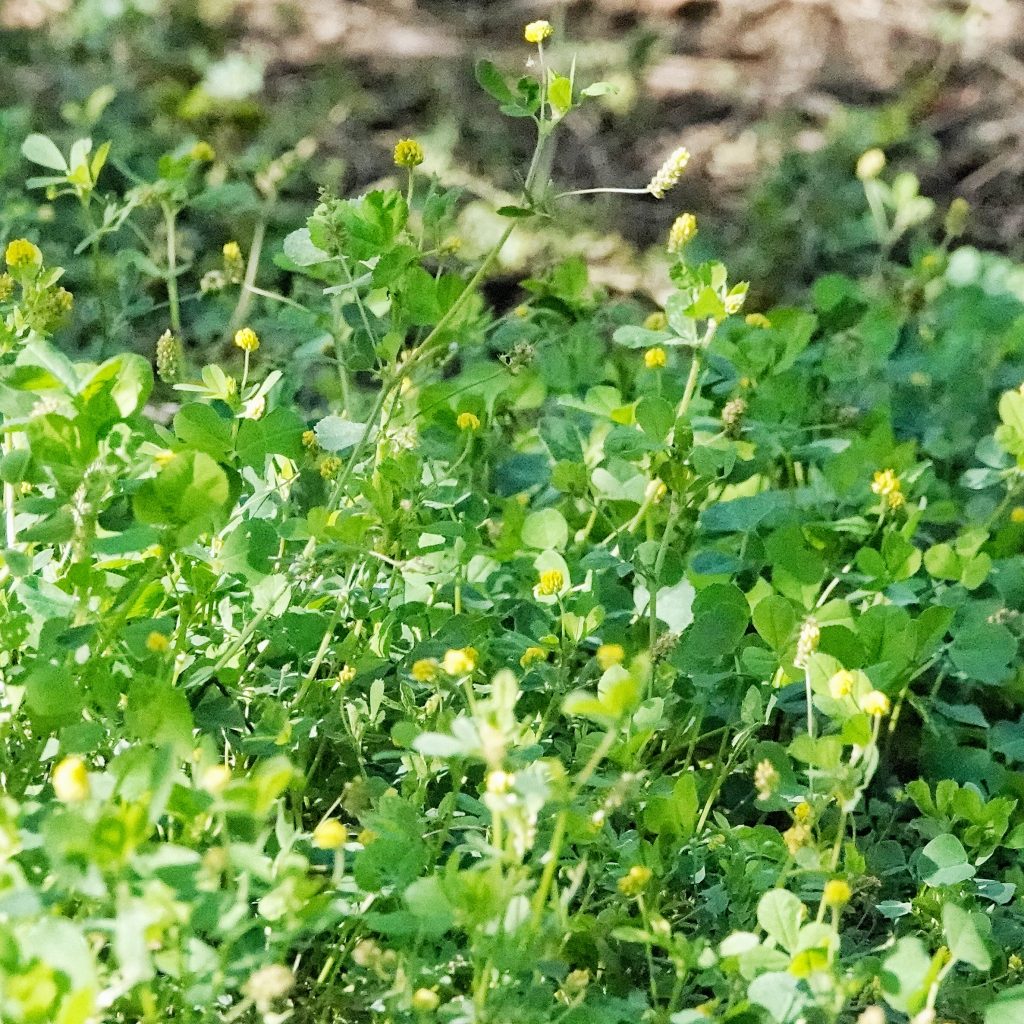
So I went home quite satisfied with myself, but I had forgotten that the two other plants that caused my confusion were in a different genus, a fact that I discovered when I went searching through “Wildflowers of the Pacific Northwest” to see what the other two hop clovers were called, and found out that they were Trifolium campestre and T. dubium. This also reminded me of why I hadn’t made the effort to identify them before, which is because the key aspect of differentiating Medicago lupulina from Trifolium campestre and T. dubium is that the Medicago has a spiral coil on the surface of the seed, which the other 2 lack, and the seeds are hard to come by early in the year. Fortunately, in early September the seeds (which look black from a distance and are the reason one sees black in so many of the common names) are abundant, and I had no trouble at all confirming this as Medicago lupulina.
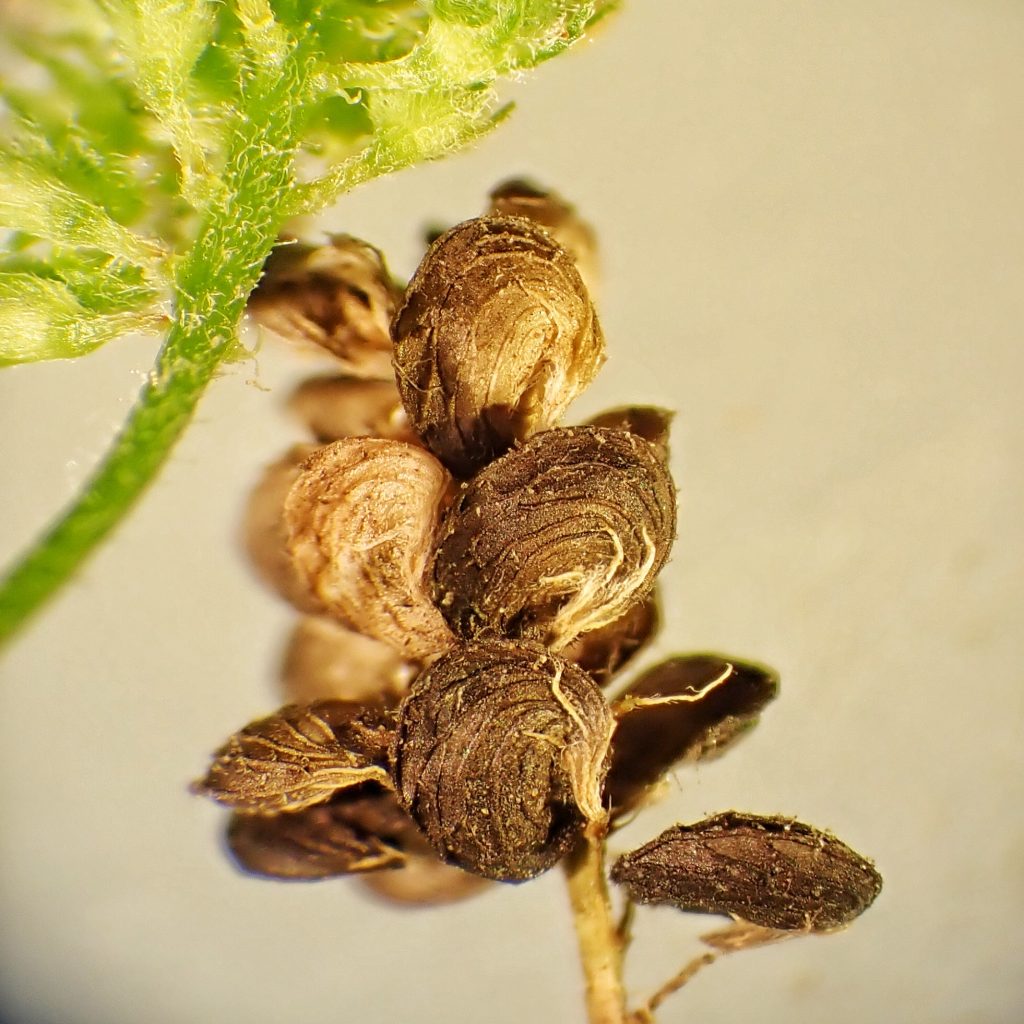
“Despite being considered a weed, this sun-loving plant can actually be a useful garden plant. Aside from being a great and nutritious food source, black medic can also improve the quality of your garden’s soil. This plant’s roots can form a symbiotic relationship with nitrogen-fixing bacterias. As a result, the soil on which this plant grows become more fertile over time. This means black medic is an effective green manure cover crop.” Black Medic, an Underrated and Useful Wild Edible – Eat The Planet . “Like other legumes, black medic exists symbiotically with nitrogen-fixing Rhizobium bacteria which form nodules on roots and convert atmospheric nitrogen into a plant-available form.” https://extension.psu.edu/lawn-and-turfgrass-weeds-black-medic-medicago-lupulina-l/ . “Depending on growing conditions, a single plant can produce up to 6,600 seeds, which can remain viable in the soil for several years.” Black Medic | Whitman County | Washington State University
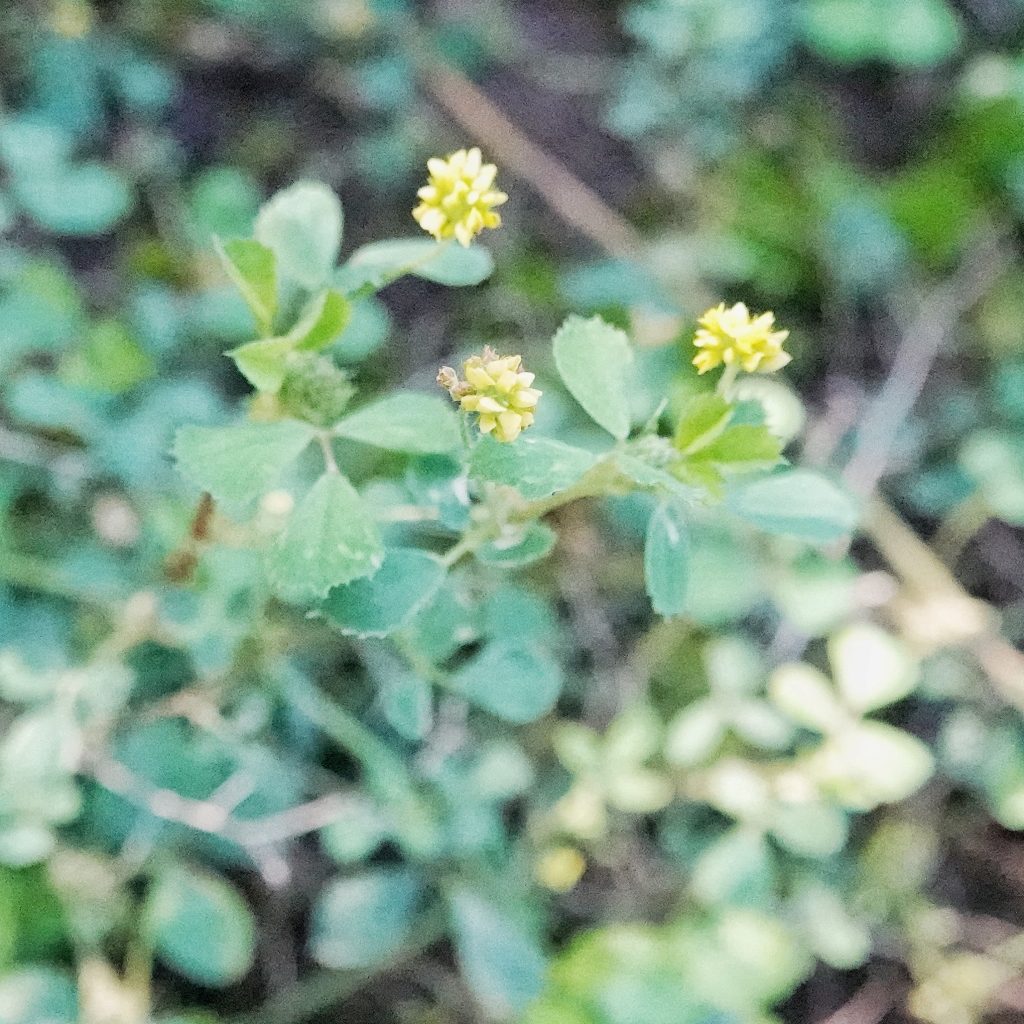
Ethnobotany– As would be expected from a non-native plant, I can find no usages by Native Americans. But modern foragers and herbalists do use this plant- “Leaves – cooked. Used as a potherb. Seed – cooked. Parched and eaten or ground into a powder. The seed is said to contain trypsin inhibitors. These can interfere with certain enzymes that help in the digestion of proteins, but are normally destroyed if the seed is sprouted first…Aqueous extracts of the plant have antibacterial properties against micro-organisms. The plant is lenitive. One of our users has sent the following information ‘Trypsin inhibitors can be inactivated by the application of heat, for example, boiling for 9 minutes. (Trypsin inhibitors are found in soy). L-canavanine can be destroyed by heat as well. Major saponins in alfalfa but also black medick, known as medicagenic acid and its derivatives, have major antifungal/antimycotic activity that could lend to better medical applications than existing antimycotic drugs that are limited in number and abilities. Medical applications meaning mycoses, which is a consequence of widespread use of immunospuppressive drugs used in transplants, cytotoxic chemotherapy in cancer treatments, broad spectrum antibiotics, recurring mycotic infections in those suffering of AIDS, and a recent hazard of previously agricultural niche saprophyte fungi that are becoming etiological agents and are relatively resistant to conventional therapies.” Medicago lupulina Black Medick PFAF Plant Database
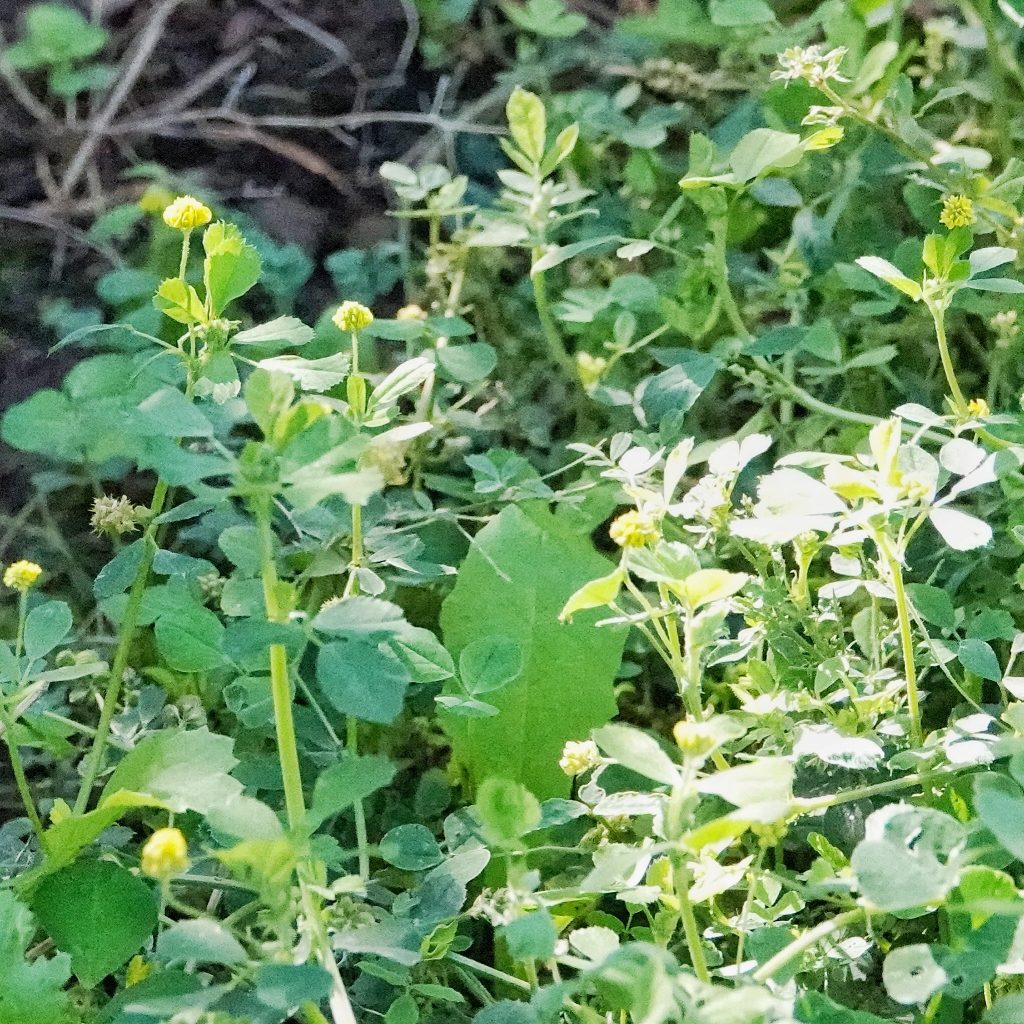
Description– “ Height-4-20…Stems prostrate to upright. Plant bears fine hairs. Leaves consist of 3 leaflets, each 1/5–4/5 in. long, finely toothed on upper half. Flowers tiny, yellow, pea-like, in round to spiky clusters at top of stalks arising along stems. Seedpods black, tightly coiled about 5 times, without prickles.” Medicago lupulina | Black Medic | Wildflowers of the Pacific Northwest
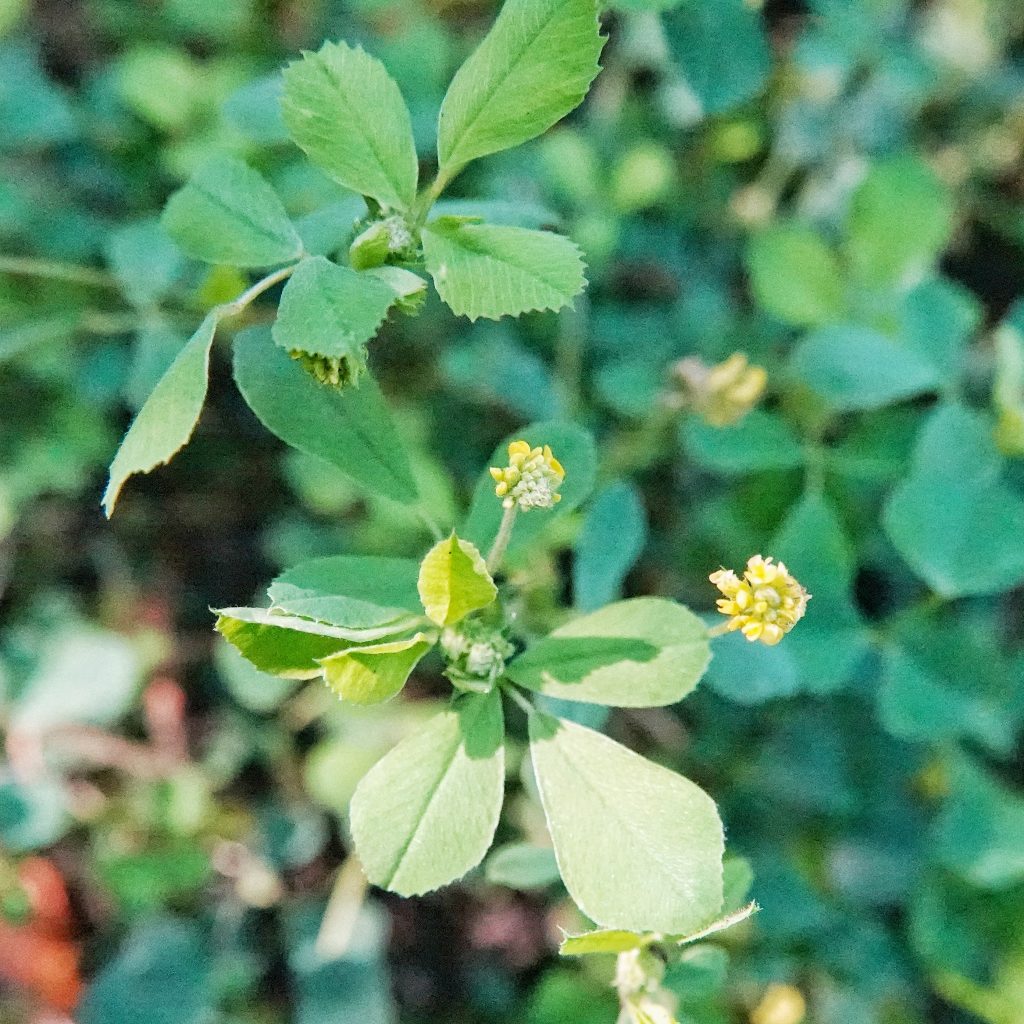
Similar species– Medicago sativa (alfalfa) is perennial and usually has blue, pink or white flowers; other Medicago have 1-6 flowers per inflorescence; Trifolium spp. do not have seeds with spiral coils.
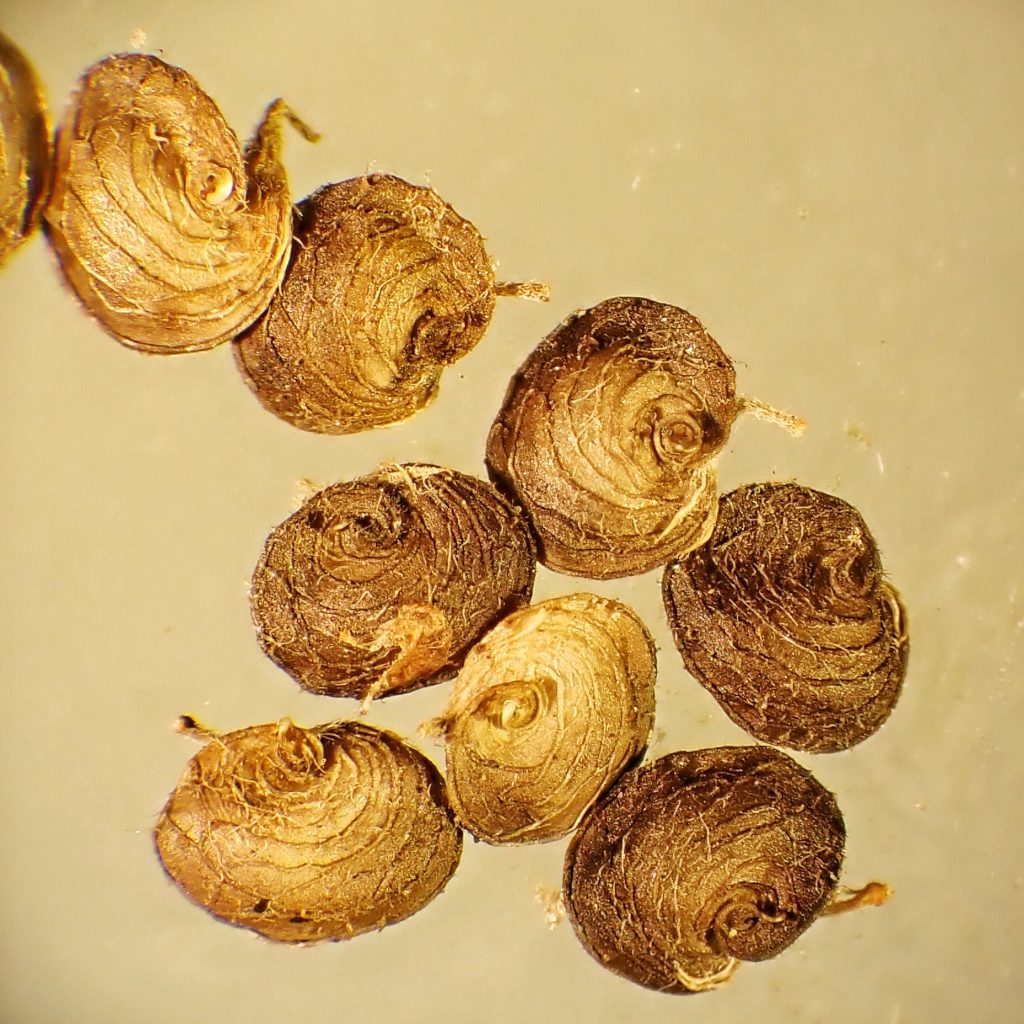
Habitat– Disturbed ground, riparian areas, meadows, lawns, roadsides.
Range-Eurasian native, now cosmopolitan; found region wide in the PNW.
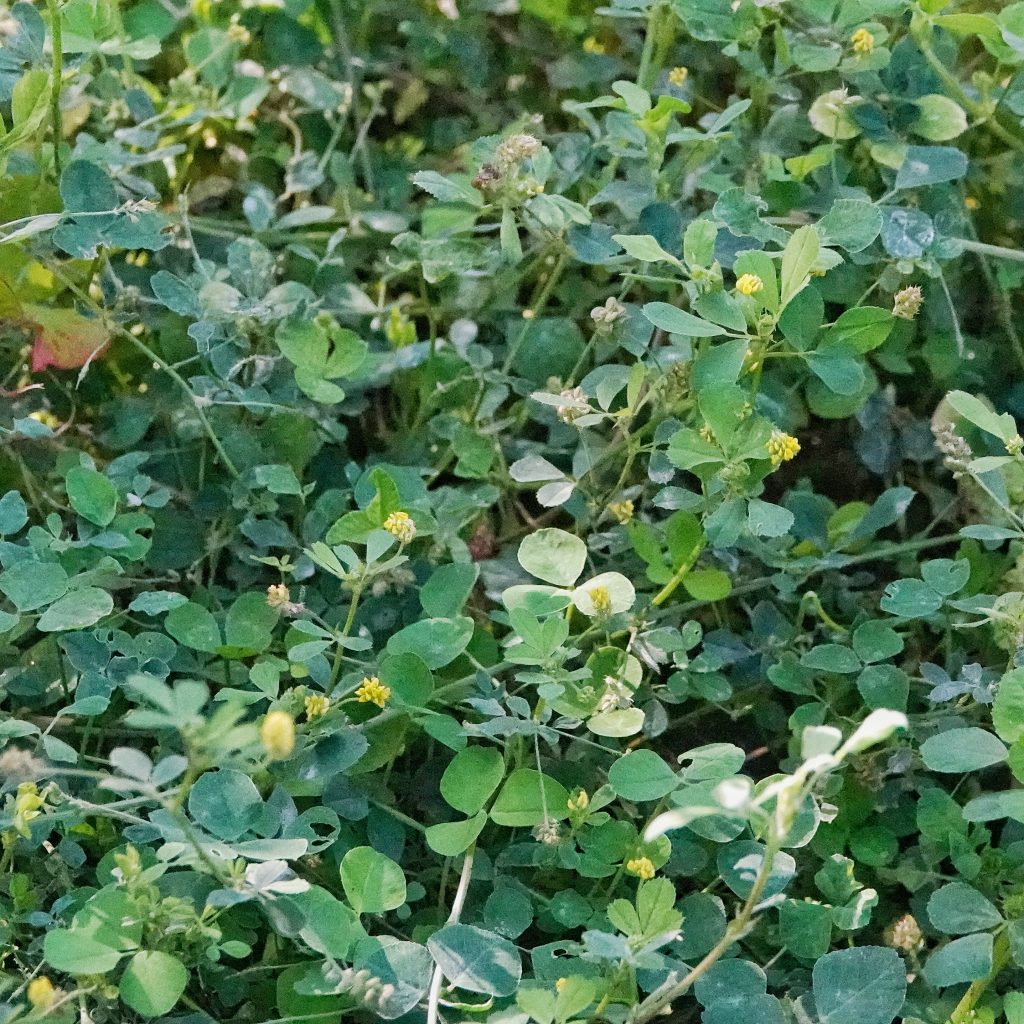
Eaten by– Larvae of the leaf mining flies Agromyza frontella, and Liriomyza trifolii, and the leaf mining moths Micrurapteryx occulta, and species in Aproaerema; bees and other pollinators come to it for nectar and pollen; deer and other browsing mammals eat its foliage; it seems that most animals do not eat the seeds, possibly because of the toxicity mentioned above.
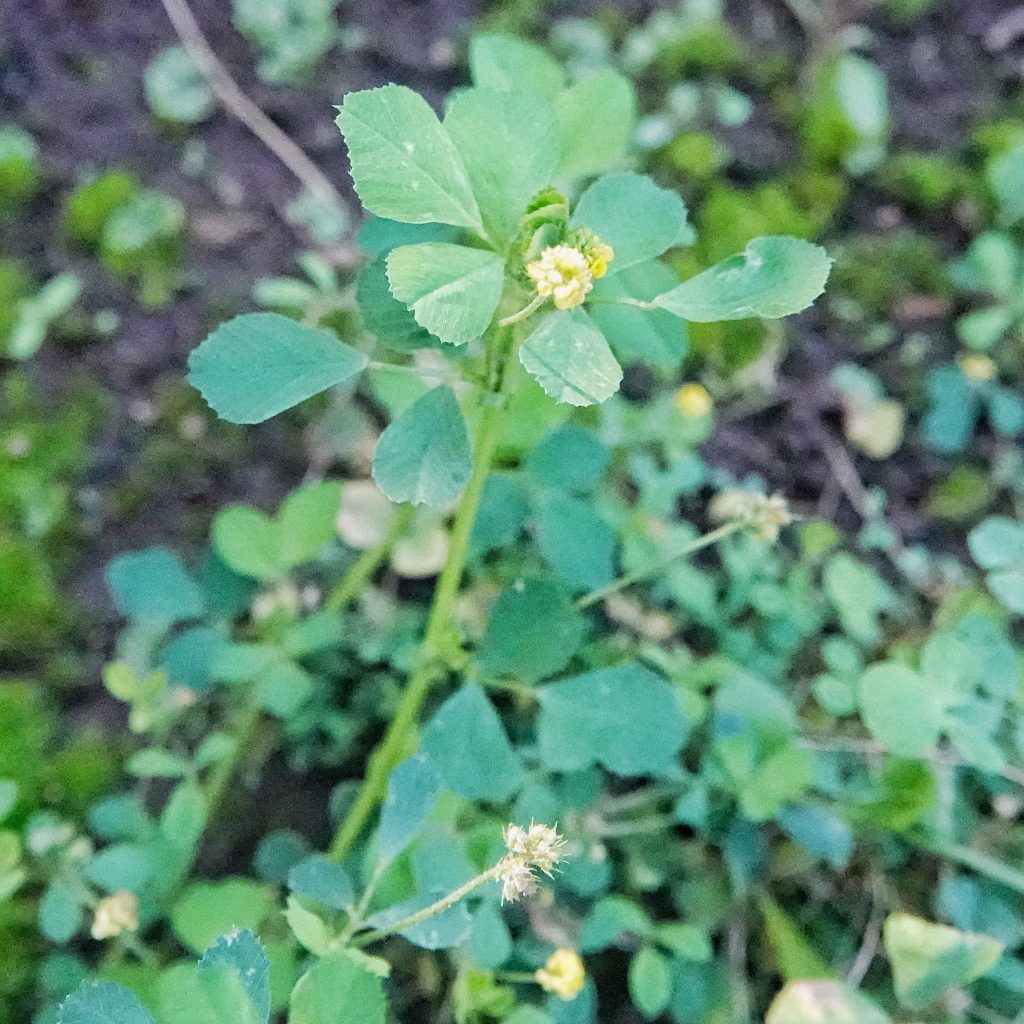
Reproductive timing– Flowers from April into September
Etymology of names– Medicago is from the Greek word for ‘alfalfa’, the type species of this genus. The specific epithet lupulina is from the Latin for ‘wolf’, and a variation was used as the specific epithet for the hop plant (Humulus lupulus), and somehow Linnaeus saw a connection between the two.
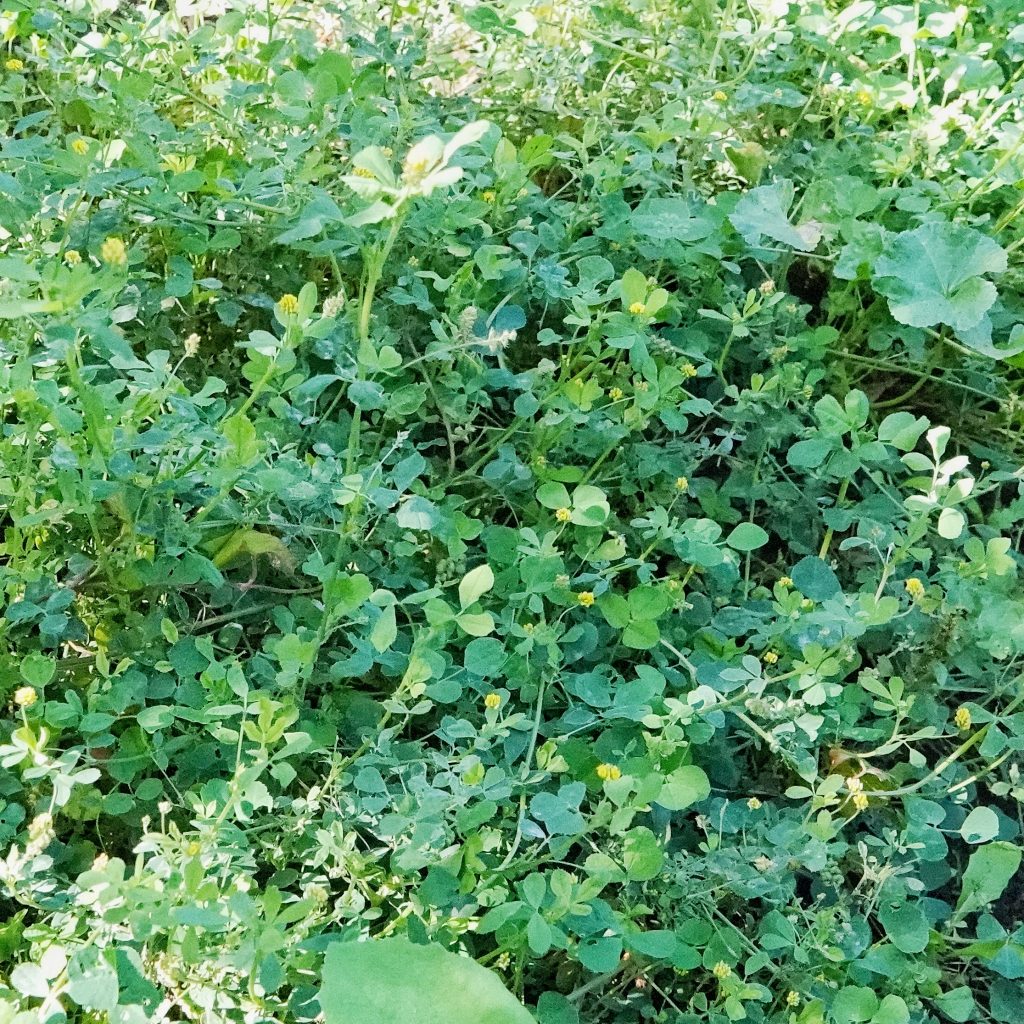
Medicago lupulina Black Medick PFAF Plant Database
https://extension.psu.edu/lawn-and-turfgrass-weeds-black-medic-medicago-lupulina-l/
Medicago lupulina (black medick) | CABI Compendium
Medicago lupulina – Burke Herbarium Image Collection
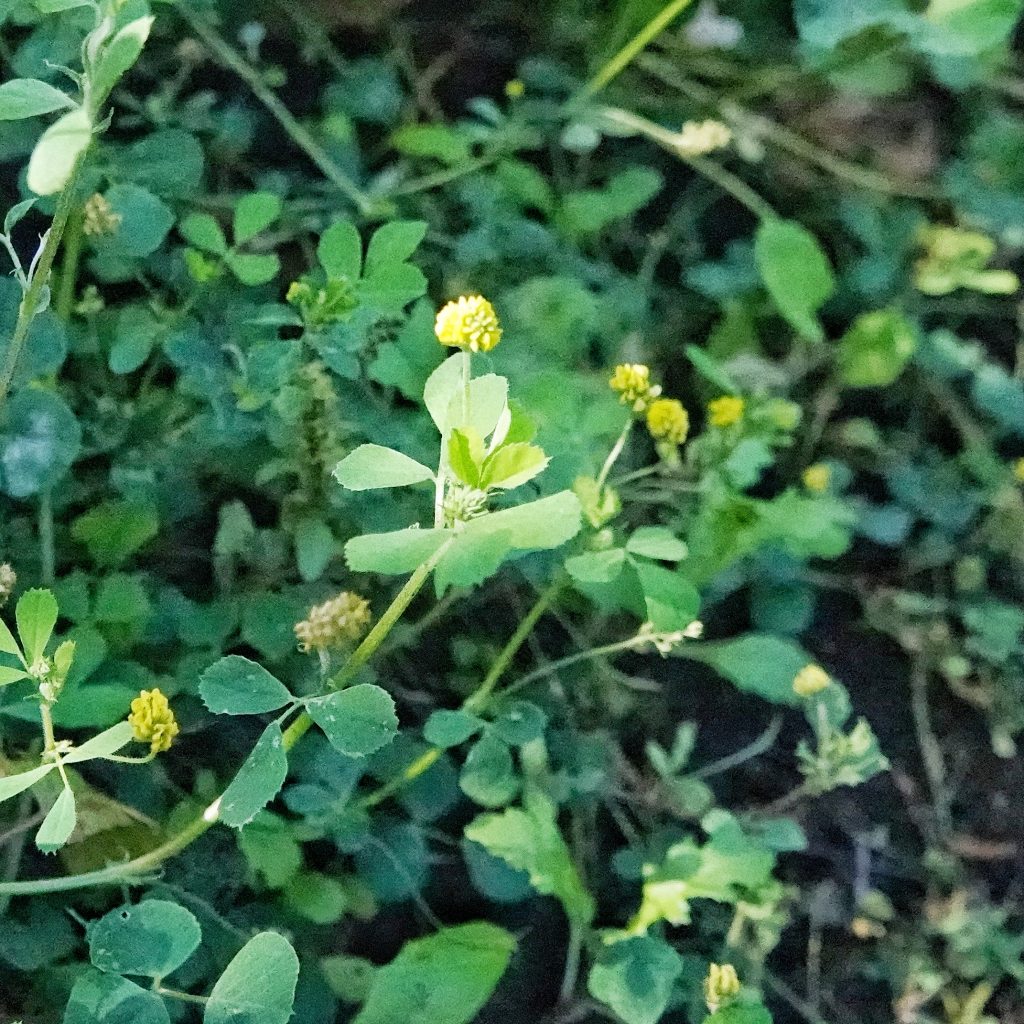
I didn’t realize there were multiple plants that looked like this. Back out to the lawn to see which I have 🙂
Let us know what you find out, Kat.
Medicago lupulina 🙂
I was hoping to be surprised, but instead I was right.
It’s the most common one, apparently.